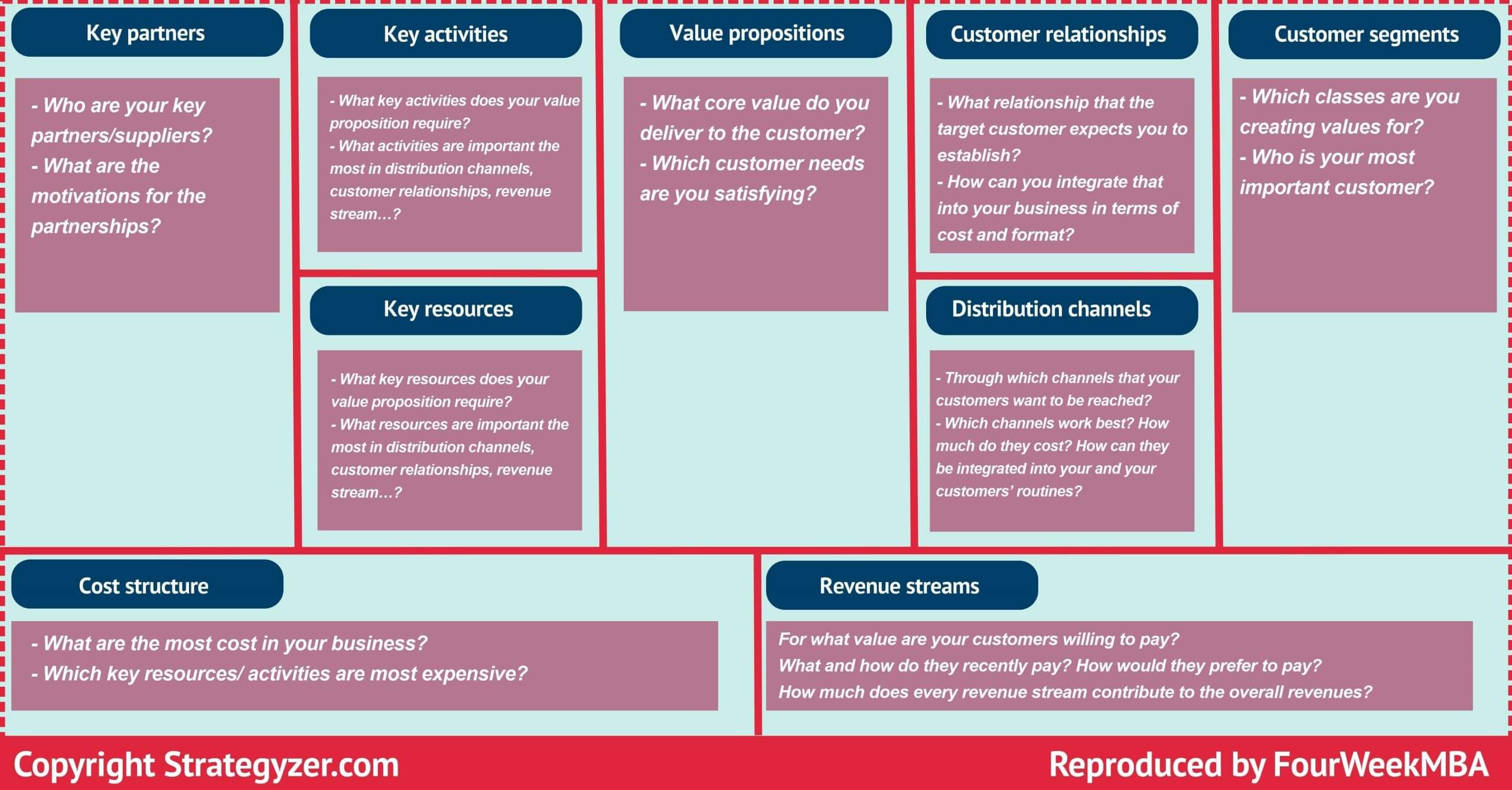

The book shows you how to create an Operating Model Canvas and provides dozens of examples of all different types of Canvases. It is possible to create an Operating Model Canvas for a multinational company, for a single business, for a function like HR or sales within a business, for a department within a function, for a charity and for a government body. Management system for planning, budgeting, performance monitoring and controls needed to run the organisation. Suppliers for those outside the organisation whose engagement is also needed.
Business model canvas software#
Information for the software applications needed to support the work. Organisation for people who will do the work, the structure, the functions needed to support the work and the decision powers given to people in the structure. Processes for the work that needs to be done to deliver a value proposition or service proposition to a customer/beneficiary: the value delivery chain. For those familiar with the Business Model Canvas, the Operating Model Canvas covers the operating elements (Activities, Resources and Partners) with six elements that make up the mnemonic POLISM – Processes, Organisation, Locations, Information, Suppliers and Management system. The Operating Model Canvas is a one-page model.
Business model canvas manuals#
Of course there are operating models of 100 pages and operating manuals of more than 1000 pages, but this book is about high-level models. So an operating model is an important step between strategy and all the decisions that need to be made to create a functioning organization.Ī high-level operating model can be a single page, but is typically more useful as ten-page document. It helps the head of supply chain design relationships with suppliers. It helps the head of IT make decisions about IT architecture. It helps the head of HR decide what sort of people are need to do the work and what sort of structure is needed to guide and control them. It helps the head of operations design the detailed work processes. Think of a building blueprint.Īn operating model helps senior managers make operational choices. At a high level, it helps convert strategy into operational implications. They should all be in your bookshelf or on the side of your desk.”Īn operating model is a document. As Yves Pigneur, author of Business Model Generation and Value Proposition Design explains “Andrew Campbell and co-authors have focused on the left-hand side of the Business Model Canvas for creating an Operating Model Canvas.” Patrick van der Pijl, author of Design a Better Business added “This book is part of a family of books – Business Model Generation, Value Proposition Design and Design a better Business. The Operating Model Canvas dovetails with the Business Model Canvas. It also has two fully worked case studies. It includes a toolbox of nearly 20 tools that help analyse and define an operating model.

It presents many examples from Uber to Shell to an IT function to a charity. Operating Model Canvas describes a tool that managers can use to help them achieve alignment with strategy and with each other.

Title: Operating Model Canvas: Aligning operations and organisation with strategy It also helps align different functions with each other. Part of the solution to both of these problems is a well-defined and communicated operating model. Sales is increasing the number of small accounts. Nearly every organisation also suffers from different functional initiatives pulling in slightly different directions. For others it is smaller, but still there. Nearly every organisation suffers from a gap between strategy and execution.


 0 kommentar(er)
0 kommentar(er)
